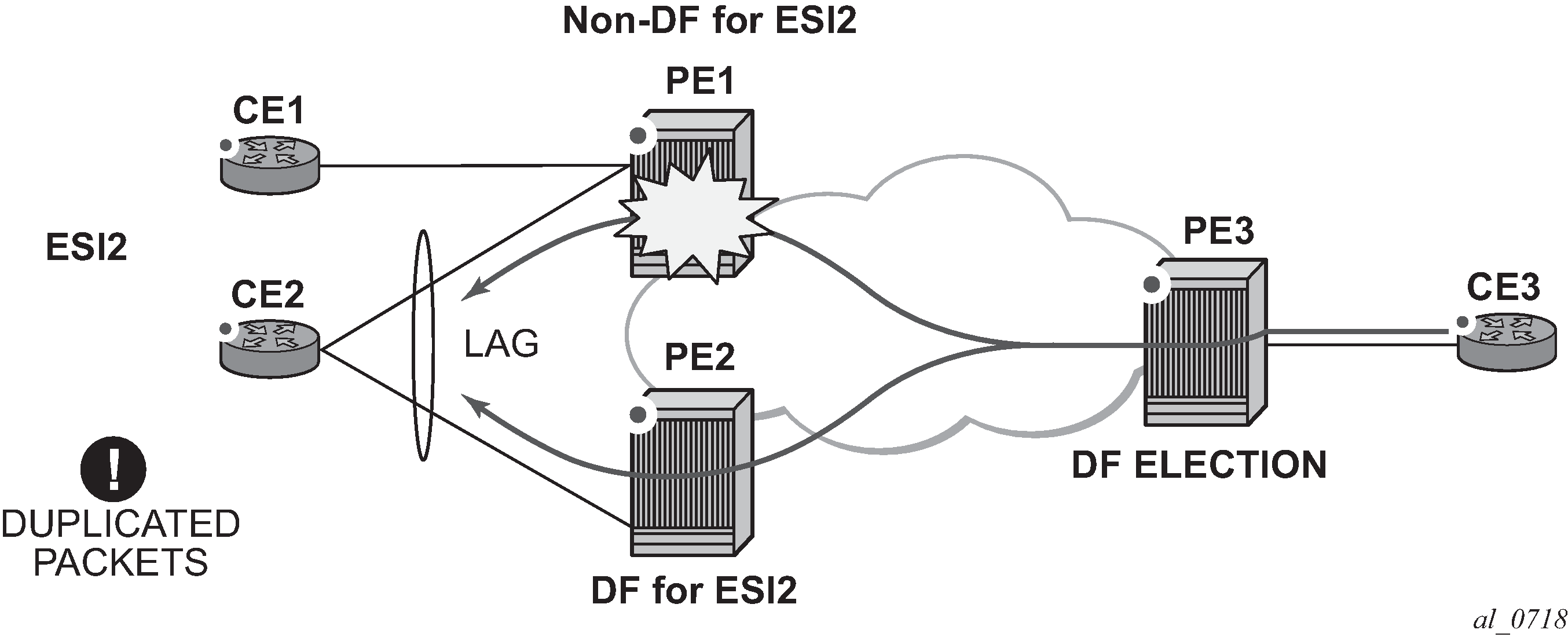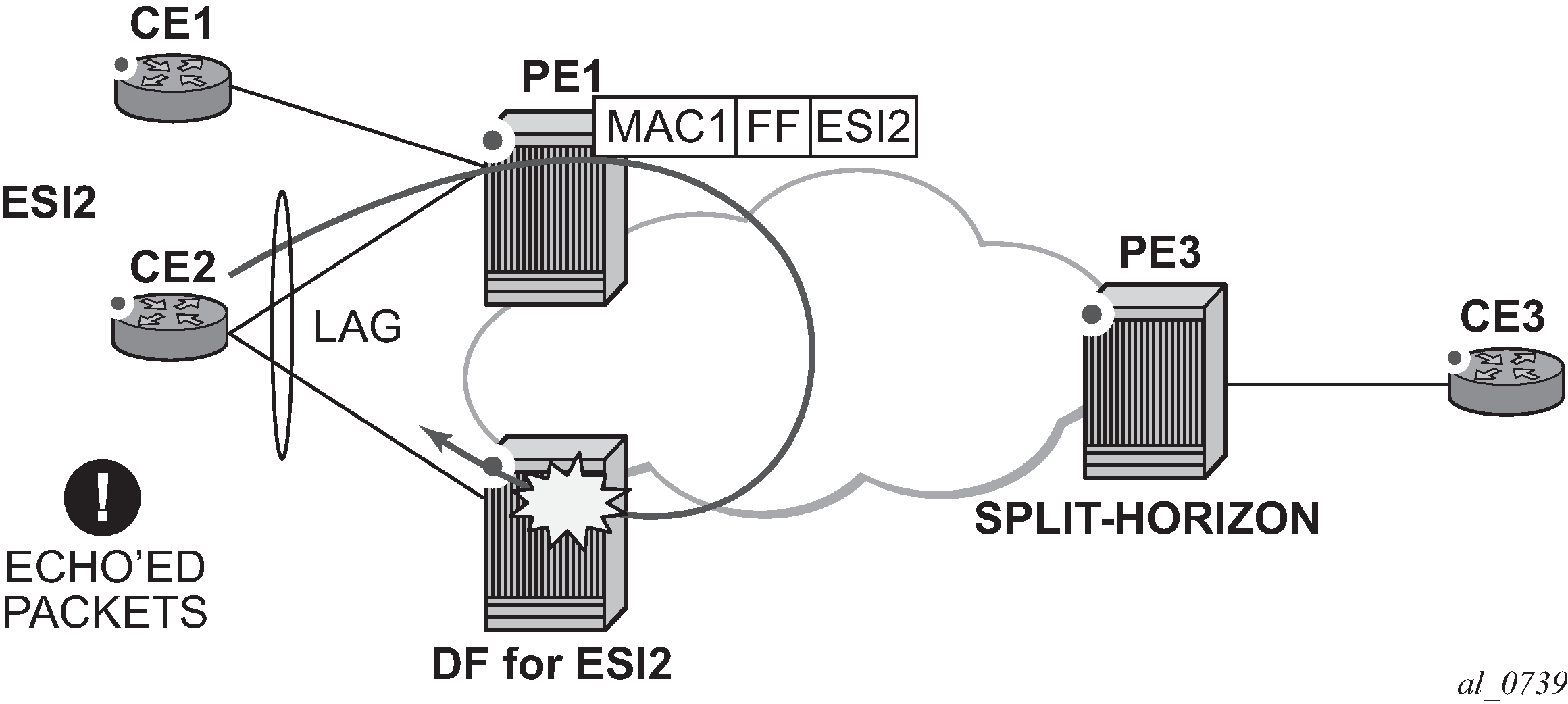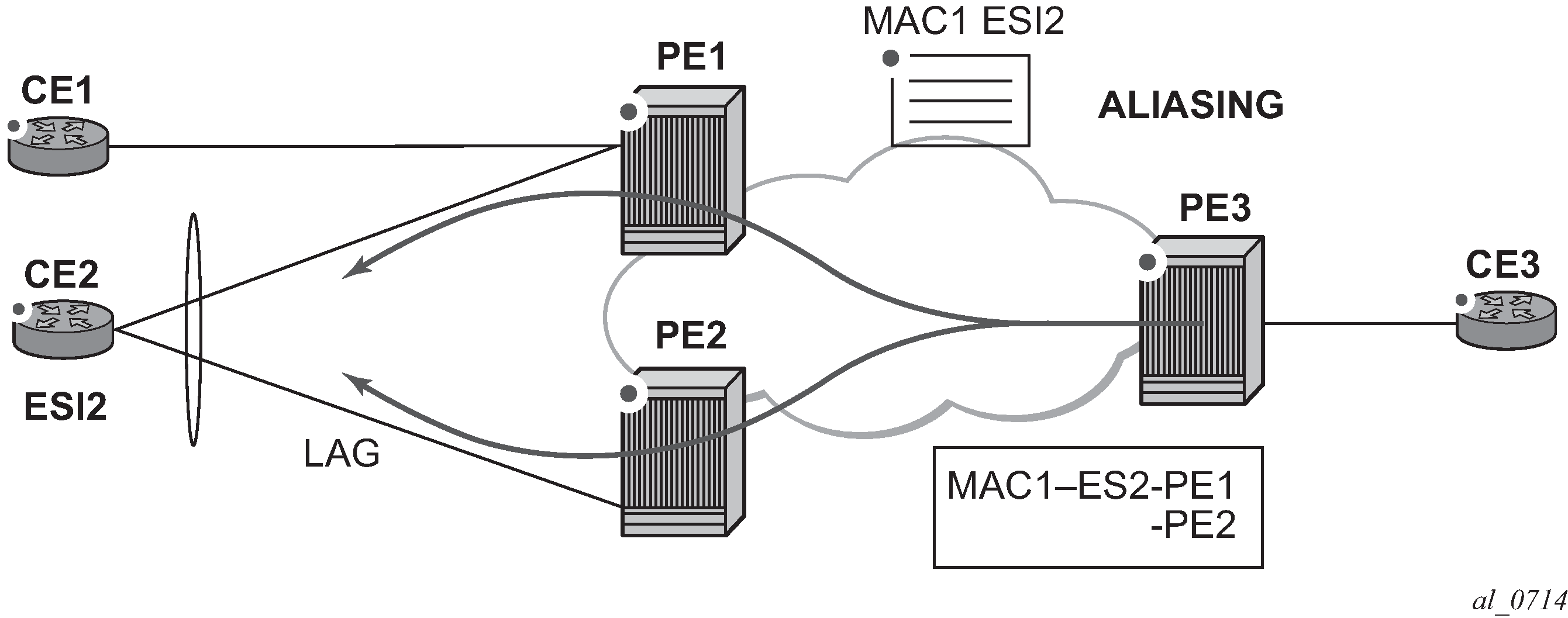As described in RFC 7432, all-active multihoming is only supported on access LAG SAPs and it is mandatory that the CE is configured with a LAG to avoid duplicated packets to the network. LACP is optional. SR OS, also, supports the association of a PW port to an all-active multihoming ES.
Three different procedures are implemented in 7750 SR, 7450 ESS, and 7950 XRS SR OS to provide all-active multihoming for a specified Ethernet-Segment:
DF (Designated Forwarder) election
Split-horizon
Aliasing
Figure: DF election shows the need for DF election in all-active multihoming.

The DF election in EVPN all-active multihoming avoids duplicate packets on the multihomed CE. The DF election procedure is responsible for electing one DF PE per ESI per service; the rest of the PEs being non-DF for the ESI and service. Only the DF forwards BUM traffic from the EVPN network toward the ES SAPs (the multihomed CE). The non-DF PEs do not forward BUM traffic to the local Ethernet-Segment SAPs.
Figure: Split-horizon shows the EVPN split-horizon concept for all-active multihoming.

The EVPN split-horizon procedure ensures that the BUM traffic originated by the multihomed PE and sent from the non-DF to the DF, is not replicated back to the CE (echoed packets on the CE). To avoid these echoed packets, the non-DF (PE1) sends all the BUM packets to the DF (PE2) with an indication of the source Ethernet-Segment. That indication is the ESI Label (ESI2 in the example), previously signaled by PE2 in the AD per-ESI route for the Ethernet-Segment. When PE2 receives an EVPN packet (after the EVPN label lookup), the PE2 finds the ESI label that identifies its local Ethernet-Segment ESI2. The BUM packet is replicated to other local CEs but not to the ESI2 SAP.
Figure: Aliasing shows the EVPN aliasing concept for all-active multihoming.

Because CE2 is multihomed to PE1 and PE2 using an all-active Ethernet-Segment, 'aliasing' is the procedure by which PE3 can load-balance the known unicast traffic between PE1 and PE2, even if the destination MAC address was only advertised by PE1 as in the example. When PE3 installs MAC1 in the FDB, it associates MAC1 not only with the advertising PE (PE1) but also with all the PEs advertising the same esi (ESI2) for the service. In this example, PE1 and PE2 advertise an AD per-EVI route for ESI2, therefore, the PE3 installs the two next-hops associated with MAC1.
Aliasing is enabled by configuring ECMP greater than 1 in the bgp-evpn>mpls context.